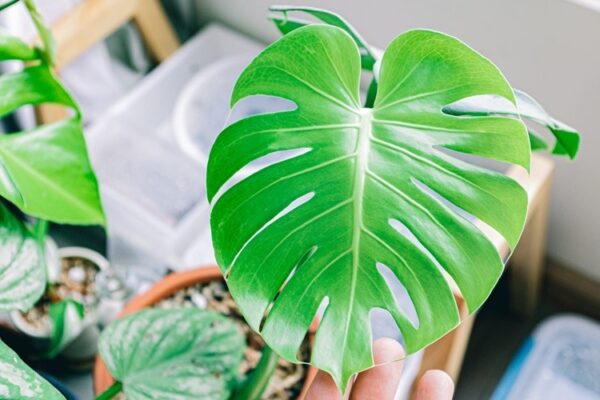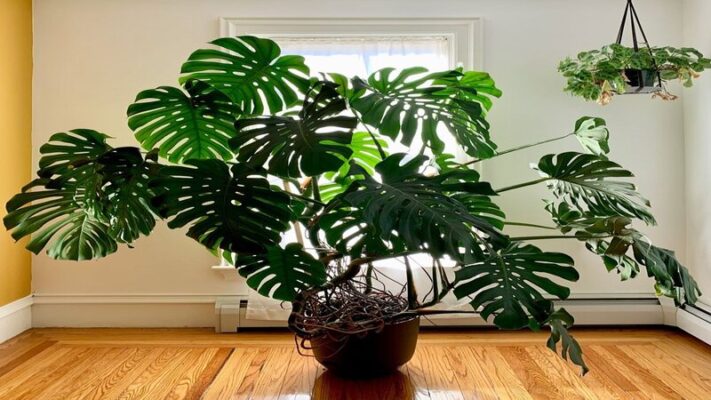Explore the enchanting world of the Barbie Monstera in our comprehensive guide. Discover the unique characteristics, care tips, and the reasons behind its captivating name. Perfect for plant enthusiasts and interior decorators alike, this article reveals everything you need to know to grow and cherish your own Barbie Monstera. Dive into the mystery and beauty of this exotic plant today!
General characteristics about Barbie Monstera
The “Barbie Monstera” refers to a variety of the popular Monstera plant, which is known for its unique and ornate leaf patterns. Characteristically, Monstera plants have large, glossy green leaves with natural holes, often called fenestrations, that develop as the plant matures.

These holes help the plant withstand strong winds in its native tropical environments. The Barbie variant could likely feature specific aesthetic traits such as variegated leaves with streaks of color or a particularly charming leaf shape, though “Barbie Monstera” is not a standard botanical term and might be used colloquially or in certain circles to describe a specific type of Monstera.
Meaning of Barbie Monstera
The term “Barbie” in Barbie Monstera could be a playful or commercial naming given to a Monstera plant that exhibits particularly beautiful or rare characteristics, much like the diversity seen in Barbie dolls. This naming can reflect the aesthetic appeal of the plant, emphasizing its beauty and unique visual qualities that make it stand out as a decorative piece in home decor.
Why Meaning of Barbie Monstera plant is loved as a bonsai
The Barbie Monstera plant, with its distinctive features and benefits, is cherished as a bonsai for several reasons:
Barbie Monstera is easy to grow
One of the key reasons the Barbie Monstera is favored for bonsai cultivation is its ease of growth. This plant is resilient and adaptable to various indoor environments, which makes it a great choice for both beginners and experienced plant enthusiasts who want to try bonsai techniques without a high risk of failure.
Barbie Monstera has a beautiful shape

The aesthetic appeal of the Barbie Monstera is undeniable. Its lush, vibrant leaves with unique fenestrations create a visually engaging display that complements any decor style. When maintained as a bonsai, these characteristics are highlighted and can be more intricately appreciated, allowing the natural beauty of its foliage to be showcased in a compact form.
Barbie Monstera is good for feng shui
Feng Shui, the ancient Chinese art of placement, values the Monstera for its ability to bring positive energy and balance into a space. The Barbie Monstera, with its attractive and clean appearance, is believed to symbolize growth and openness due to its open leaf fenestrations, allowing energy (Chi) to flow freely throughout the environment. Keeping it as a bonsai might amplify these benefits, as its presence can contribute to a sense of well-being and harmony in smaller or more personalized spaces.
These elements make the Barbie Monstera not just a plant but a multifaceted addition to homes or offices, combining ease of care, beauty, and positive vibes into a single bonsai package.
How Barbie Monstera looks
The Barbie Monstera isn’t a standard or scientifically recognized name for a specific type of Monstera plant, so it’s a bit challenging to describe precisely how it looks without more context. However, if we consider the playful naming and the usual characteristics of popular Monstera varieties, here’s how a Monstera that might be referred to as a Barbie Monstera could potentially look:
Leaf Characteristics: Likely to have vibrant, glossy leaves that are lush and full. The leaves may feature the iconic split or fenestration patterns that Monstera plants are known for. These splits or holes typically increase in number and size as the plant matures.
Coloration: The leaves might exhibit a striking variegation, with patterns of white, yellow, or even pink alongside the natural green. This variegation could be why the name Barbie is applied, suggesting something uniquely attractive or eye-catching, much like the varied styles of Barbie dolls.

Growth Habit: Monsteras generally have a climbing or trailing habit, but a Monstera referred to as a “Barbie” might be particularly lush and bushy or styled in a way that emphasizes a compact and aesthetically pleasing shape.
Size: If cultivated in a bonsai style, this plant might be maintained at a smaller, more manageable size compared to the typical Monstera, which can grow quite large. The bonsai technique would focus on highlighting the plant’s unique features in a miniaturized form.
These characteristics make the Barbie Monstera a particularly decorative and appealing houseplant, assuming the term is used colloquially to describe an exceptionally beautiful or distinctive Monstera.
Notes when planting Barbie Monsteara
When planting and caring for a Monstera that might be colloquially referred to as “Barbie Monstera,” due to its perhaps uniquely attractive characteristics, there are several important considerations to keep in mind to ensure it thrives. Here are some key notes:
Light Requirements
Monsteras prefer bright, indirect light. Direct sunlight can scorch the leaves, while too little light can stunt growth and reduce the leaf fenestrations. Positioning the plant in a spot with filtered light, such as near a window with sheer curtains, is ideal.
Watering
Water your Barbie Monstera when the top inch of soil feels dry to the touch. Ensure the pot has good drainage to avoid waterlogging, which can lead to root rot. The frequency of watering will vary with the temperature, humidity, and light levels.
Humidity and Temperature
Monsteras thrive in high humidity environments typical of their native tropical habitat. A humidity level of 60% or higher is beneficial. You can increase humidity with a humidifier, by placing a water tray near the plant, or by regular misting. Keep the temperature between 65°F and 85°F (18°C to 29°C) for optimal growth.
Fertilizing
Feed your Barbie Monstera with a balanced, water-soluble fertilizer every month during the growing season (spring and summer). Reduce feeding to every other month in the fall and winter when plant growth naturally slows.
Pruning and Maintenance
Regularly prune any dead or yellowing leaves to promote new growth and maintain the plant’s aesthetics. This also helps prevent pests and diseases. Use clean, sharp scissors or pruning shears to make clean cuts.
Support
Since Monsteras are climbing plants, providing a moss pole or trellis can support their growth and encourage vertical development, leading to larger leaves and more pronounced fenestrations.
Pest Management
Keep an eye out for pests like spider mites, mealybugs, and scale. If you spot pests, treat the plant with neem oil or an appropriate insecticidal soap. Regularly wiping down the leaves can prevent pest infestations and also keep the foliage looking its best.
Repotting
Monsteras should be repotted every two to three years or when they outgrow their current pot. Choose a pot that is 2-3 inches larger in diameter than the current one to allow room for growth.
Following these care guidelines of Leafgrace will help ensure that your Barbie Monstera remains healthy, vibrant, and a standout feature in your home or office.



